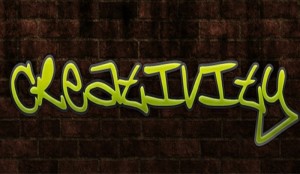 When I hand someone my business card, they often comment on my title – Creativity Warrior (or Creativity Architect, Agent, or Actuator, tried at different times during the evolution of my business). A common reaction is “Oh, do you try to bring art to corporate?” And I say: “no,” and remind them that creativity does not apply just to art, that it applies to every discipline. And usually I sense the wheels turning in their heads, and then they nod knowingly.
When I hand someone my business card, they often comment on my title – Creativity Warrior (or Creativity Architect, Agent, or Actuator, tried at different times during the evolution of my business). A common reaction is “Oh, do you try to bring art to corporate?” And I say: “no,” and remind them that creativity does not apply just to art, that it applies to every discipline. And usually I sense the wheels turning in their heads, and then they nod knowingly.
Creativity is not only relevant to any discipline, it is the most significant gift of human intelligence, says Sir Ken Robinson, internationally recognized leader in the development of creativity, innovation, and human resources. Unfortunately, it is being squandered if it is not honored and expressed in all domains in both personal and professional life. It is a shame that it is so common for creativity to be compartmentalized. I’ve known people who are like robots at work and just look forward to expressing themselves creatively outside of work. In two consecutive IBM Global CEO studies, 70% percent said creativity was the key attribute to be developed in leaders and the most important attribute for employees to develop for future success. In the Adobe State of Create Study, however, 80% of respondents said there is increasing pressure to be productive rather than creative at work. To be human is to be creative so it’s not surprising only 5% of the U.S. workforce is being “maximized” according to Gallup in 2015.
To understand why “creativity” is relevant to work requires that we understand what creativity is. The typical definition is rather abstract and/or haphazard. When asked what it is, typical responses include some combination of “new and novel ideas,” or “something that has not been done before.” Those definitions, I suggest, are not operational. If a leader wants employees to be more creative and those employees think creative means “new and novel,” what exactly are they supposed to do? Brainstorm? (That will be the topic of a future blog.) There seems to be an assumption that everyone just “knows” what creativity means and they should deliver it on demand.
If people knew what it meant, they would have more confidence in expressing it. BTW, the same is true for innovation, which many folks mistakenly think is essentially the same as creativity. I’ve read many articles in which the authors use the words interchangeably in the same paragraph. In the Little Black Book of Innovation, Scott Anthony says: “Over the past few years, I have written several books on innovation, totaling close to a quarter million words. I went back and looked, and in not one of those books do I actually define what innovation is. That’s a glaring oversight. After all, you can’t implore readers to be better at something without telling them what that something is…For a word that is thrown around so much, innovation lacks a clear and consistent definition.” The same can be said of creativity.
Let’s explore operational definitions of creativity and innovation. Most definitions address Creativity “the process” or Creativity “the outcome.” For individuals to effectively perform the process and produce the outcome, they must understand Creativity “the noun.”
Creativity the noun is a system of natural human qualities that are used cooperatively or alternatively to turn insights into great ideas and great ideas into value. Because they are human qualities, and no two people are exactly alike, creativity is idiosyncratic. Because creativity is idiosyncratic, there is not one ideal condition for it. Because they is not one ideal condition, individuals must choose to do what they know supports the manifestation of these qualities in themselves.
In other words, creativity is personal. Everyone has these qualities of creativity, but for whatever reason, they are seldom manifested in an integrated way. To become a creative person, to bring out these qualities, you must be aware of them and be aware of (and use) the process for augmenting and manifesting them. This simple creativity process (not the problem-solving process) is rarely acknowledged even though it captures how insights get transformed into great ideas. It has stages that are always relevant, but the strategies for each stage are idiosyncratic, varying by person and insight. Beyond the great ideas that come out of it, these qualities and this process also are useful to explore interests, strengths, comfort zones, and choose how to support creativity in professional and personal life.
Why is this relevant to innovation? The innovation process is organizational. Whereas the creativity process is relevant to people coming up with insights and transforming them into great ideas, the innovation process is relevant to taking those great ideas and turning them into value. Organizations provide the resources, processes, standards, and policies to do that. Ideally, the people resources are creative.
 The Gift and the Servant
The Gift and the Servant Do You Have What It Takes to Innovate?
Do You Have What It Takes to Innovate? The Solution to the $450+ Billion Engagement Problem
The Solution to the $450+ Billion Engagement Problem Happy Birthday to My Uncle George Washington
Happy Birthday to My Uncle George Washington



Leave a Reply